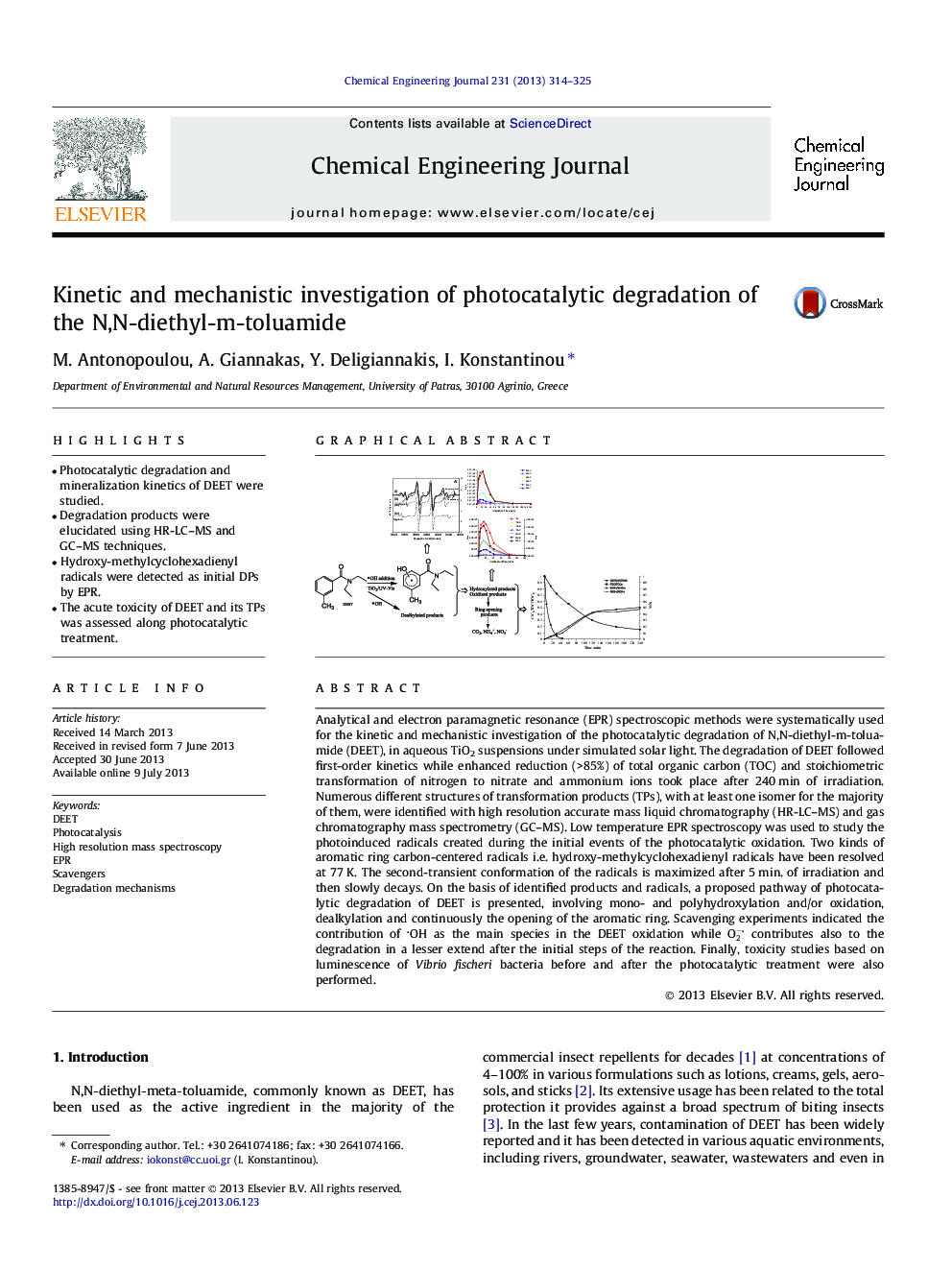| Article ID | Journal | Published Year | Pages | File Type |
|---|---|---|---|---|
| 148277 | Chemical Engineering Journal | 2013 | 12 Pages |
•Photocatalytic degradation and mineralization kinetics of DEET were studied.•Degradation products were elucidated using HR-LC–MS and GC–MS techniques.•Hydroxy-methylcyclohexadienyl radicals were detected as initial DPs by EPR.•The acute toxicity of DEET and its TPs was assessed along photocatalytic treatment.
Analytical and electron paramagnetic resonance (EPR) spectroscopic methods were systematically used for the kinetic and mechanistic investigation of the photocatalytic degradation of N,N-diethyl-m-toluamide (DEET), in aqueous TiO2 suspensions under simulated solar light. The degradation of DEET followed first-order kinetics while enhanced reduction (>85%) of total organic carbon (TOC) and stoichiometric transformation of nitrogen to nitrate and ammonium ions took place after 240 min of irradiation. Numerous different structures of transformation products (TPs), with at least one isomer for the majority of them, were identified with high resolution accurate mass liquid chromatography (HR-LC–MS) and gas chromatography mass spectrometry (GC–MS). Low temperature EPR spectroscopy was used to study the photoinduced radicals created during the initial events of the photocatalytic oxidation. Two kinds of aromatic ring carbon-centered radicals i.e. hydroxy-methylcyclohexadienyl radicals have been resolved at 77 K. The second-transient conformation of the radicals is maximized after 5 min. of irradiation and then slowly decays. On the basis of identified products and radicals, a proposed pathway of photocatalytic degradation of DEET is presented, involving mono- and polyhydroxylation and/or oxidation, dealkylation and continuously the opening of the aromatic ring. Scavenging experiments indicated the contribution of OH as the main species in the DEET oxidation while O2- contributes also to the degradation in a lesser extend after the initial steps of the reaction. Finally, toxicity studies based on luminescence of Vibrio fischeri bacteria before and after the photocatalytic treatment were also performed.
Graphical abstractFigure optionsDownload full-size imageDownload as PowerPoint slide
